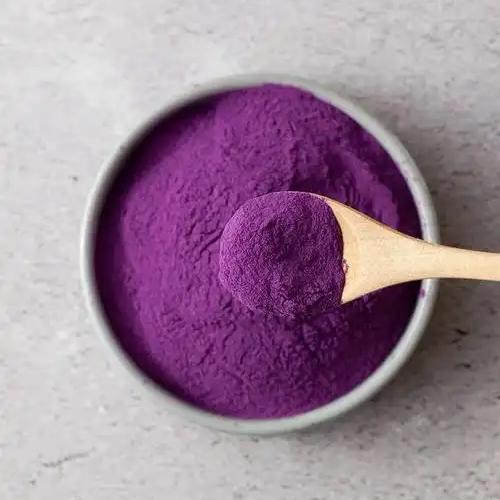식물에서 추출한 천연염료 7가지
1 도입
식용 색소 improves the color of food and is an important component of food additives. Food coloring is divided into two types: synthetic and natural. With the development of technology, it has been discovered that many varieties of synthetic coloring have serious chronic toxicity and carcinogenicity, causing widespread consumer concern. However, domestic and foreign research has found that natural pigments are not only highly safe and have a soft hue, but some also have certain physiological activities and are considered functional natural food coloring. Therefore, the development and utilization of natural pigments has become a hot research topic at this stage. This paper mainly provides a brief overview of the seven plant pigments that have been studied more, with the aim of providing theoretical support for researchers engaged in related research.
7가지 식물색소에 대한 연구 개요 2
2.1 뽕적색안료
Mulberries are commonly known as mulberry dates, mulberry fruit, or mulberry berries. They are the mature aggregate fruit of Morus alba L., a plant in the mulberry genus of the mulberry family. Mulberry berries are purplish red or purplish black (some are also white), with an oily, elastic texture and a slightly sour and sweet taste [1]. Mulberry red pigment is extracted from natural mulberry fruit and is a kind of anthocyanin pigment[2]. Anthocyanins exist in the form of glycosides, i.e. anthocyanins, in their natural state. Anthocyanins have a typical C6 - C3 - C6 carbon skeleton structure and are therefore considered to be a kind of flavonoid. It can reduce the fat content of serum and liver, and has anti-mutagenic and anti-tumor effects [3]. Mulberry pigment shows some instability in heating and ultrasound treatment in different concentrations of hydrochloric acid, citric acid, tartaric acid and ascorbic acid, but the degree of instability varies with the type and concentration of acid, and the change is complex. Comparatively speaking, the pigment in ascorbic acid solution is most unstable to heating and ultrasonic treatment, while the pigment in hydrochloric acid solution is relatively stable to heating treatment; the pigment in citric acid solution is relatively stable to ultrasonic treatment [4].
Li Xinlei et al. [5] determined the optimal conditions for the extraction of mulberry pigments through single-factor and orthogonal test studies: 80% ethanol, a material-to-liquid ratio of 1:3 (g/mL), an extraction temperature of 30°C, and an extraction time of 0.25 h. The order of influence of each factor was: material-to-liquid ratio > ethanol concentration > extraction time > extraction temperature. Xiao Gengsheng et al. [6] studied the dynamic changes of the main pigments during the ripening of mulberries, using high performance liquid chromatography (HPLC) to detect the main anthocyanin components during the ripening process of mulberries, which mainly include cyanidin-3-O-glucoside (C3G), cyanidin-3-O-rutinoside (C3R) and pelargonidin-3-O-glucoside (Pg3G). 3 The changes in the three components are as follows: C3G and C3R are the two main anthocyanin components in mulberries throughout the ripening period, and C3G tends to gradually increase, while C3R first increases and then decreases slightly, and then rapidly increases in the later stage. Pg3G is not detected at the beginning of the ripening and growth of mulberries, and then first increases and then decreases, and then rapidly increases in the later stages. In production, the characteristics of the content of the main pigments in mulberries and the accumulation of anthocyanin compounds can be used as one of the reference factors for determining the appropriate time to harvest mulberries.
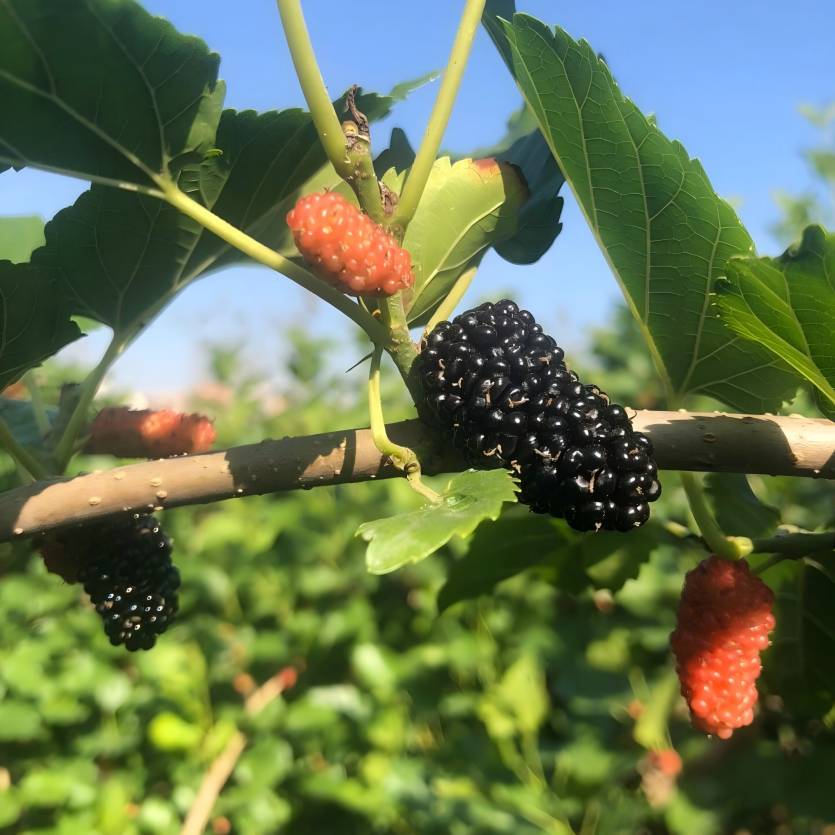
포도 피부 안료 2.2
포도 피부 색소는 안전하고 독성이 없으며 특정 영양소를 함유한 천연 안토시아닌 색소입니다.그들은 산화 방지 및 활성산소를 제거하는 효과가 있으며, 특정 약용 및 건강에 이점이 있습니다.식품이나 화장품 [7]의 색소로 쓰이기도 한다.일부 문헌에서 교호 포도의 껍질로부터 천연색소를 추출하기 위한 최적의 공정조건을 추출제로 무수에탄올, 원료 5.00 g, 추출액 35 mL, 추출 pH 3, 추출온도 80°C, 추출시간 1 h를 직교시험을 이용하여 구하였다는 보고가 있다 각 요인의 영향순서는 추출시간>추출제의 양>추출 pH >추출 온도 [8].
왕춘룡 등 9명은 교호 포도껍질에서 색소를 추출하는 조건에 대해 토론했다.그 결과 포도 껍질색소 추출에는 70% 에탄올 + 0.5% 구연산 (부피비 5:1)이 가장 효율적이었으며, 그 다음으로 80% 에탄올 + 0.5% 구연산 (5:1)이 가장 효율적이었다. 구연산 5% (5:1);70% 에탄올 + 0.5% 구연산 (5:1)을 추출액으로 사용하여, 추출액에 대한 포도 껍질의 질량은 1:10 (g/mL), 최적 온도는 65°C, 최적 추출 시간은 90분, 추출의 최적 pH는 2.0.포도 껍질 색소의 안정성에 대한 연구 결과, 산도는 색소 안정성에 유의한 영향을 미치며 색소에 유의한 발색증진효과가 있는 것으로 나타났다;낮은 온도는 안료의 저장에 도움이됩니다;■ 햇빛에 장시간 노출되면 안료가 점차 변질된다;금속 이온 Fe3+는 안료 안정성에 중대한 영향을 미칩니다;첨가제 H2O2는 안료 안정성에 중대한 영향이 있습니다;비타민 C 수용액, 자당 수용액, 벤조산나트륨 등은 색소 안정성에 작은 영향을 미친다 [10].리옌메이 등 11명은 장미 향기 포도 피부 색소의 항산화 활성을 연구했고 장미 향기 포도 피부 색소는 강한 환원력이 있고 효과적으로 히드록시기 라디칼 제거 할 수 있다는 것을 발견했다;그들은 또한 생쥐 간의 자연 지질 과산화에 좋은 억제 효과를 가지고 있습니다.

귤껍질 색소 2.3
귤껍질 색소는 널리 쓰이는 천연 색소의 일종이다.주로 귤, 만다린, 포멜로, 시트론, 스위트 오렌지, 라임, 금귤, 가르데니아 등 식물의 껍질에서 발견된다.귤껍질 색소, 귤껍질 플라보노이드, 귤껍질 다당류 등의 활성물질이 풍부하다.식용 착색제 [12] 로서 중요한 개발 및 활용 가치를 가지고 있다.귤껍질 안료의 추출방법에 대한 연구는 초음파보조추출방법이 공업생산에서 귤껍질 안료를 추출하는데보다 이상적인 방법임을 보여주었다.최적 공정 조건은 초음파 주파수 40 kHz, 에탄올 농도 6 5%, 액체 대 고체 비율 1:10, 추출 온도 60°C, 추출 시간 30분, 추출 시간 2회이며,이 조건에서 귤껍질 색소의 수율은 6.03%이다 [13].웅정장 [14]은 귤껍질 안료의 추출을 위한 최적의 공정조건은 중주파수의 초음파 주파수 (47.6 KHz), 55% 에탄올의 추출용매, 추출시간 15분, 추출온도 60°C, 물질대 액비의 1:15 라고 보고 있다.오렌지 껍질 색소의 활성에 대해서도 많은 보고가 있었다.
Li Lingxu et al. [15] extracted alcohol-soluble pigments, ether-soluble pigments, alcohol-water-soluble pigments and water-soluble pigments from orange peels, and used the mycelial growth rate method to preliminarily determine the antibacterial activity of different solvent extracts of orange peels against seven pathogenic fungi such as apple rot fungi. The results showed that ether-soluble pigments and alcohol-water-soluble pigments had different degrees of inhibitory effects on the seven plant pathogenic fungi. Wang Hongtao [16] determined the antibacterial effect of orange peel pigments on common microorganisms and the effect of commonly used food additives and light on the stability of pigments through single factor experiments to explore the antibacterial and stability of orange peel pigments. The study found that orange peel pigments have different degrees of inhibitory effects on common pathogenic bacteria, yeasts and molds.
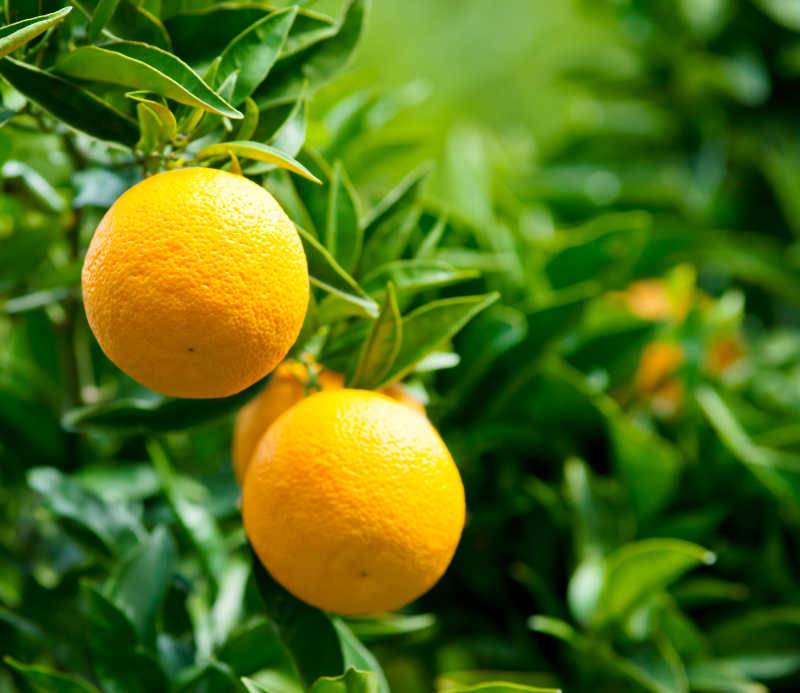
밤껍질 색소 2.4
Chestnut shell pigment is a natural brown pigment with good water solubility, strong coloring power and stable properties. It has a certain degree of antioxidant and antibacterial effects, and is currently one of the few 천연색with stable properties. It has high development value. Zhang Yaping [17] established the extraction conditions for chestnut shell pigment by analyzing the factors affecting the extraction of chestnut shell brown pigment: the mass fraction of NaOH was 2%, the extraction temperature was 80°C, and the extraction time was 3 h. Zhou Guoyan et al. [18] extracted pigments from chestnut shells using ethanol and ultrasound methods, compared the two methods, and studied the antibacterial properties and applications of the pigments in chestnut shells. The results showed that ultrasonic waves have the advantages of saving time, energy and a high extraction rate. The optimal process parameters for the ultrasonic-assisted extraction method were 40% ethanol volume fraction, 200 W ultrasonic power and 8 min of action time. Chestnut shell pigments have an inhibitory effect on Bacillus subtilis, Escherichia coli, Aspergillus niger and Penicillium. They also have a certain preservative effect on apple juice.
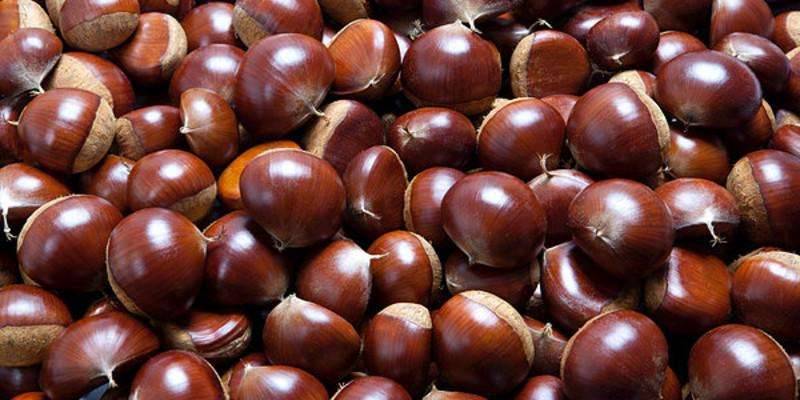
흑미 색소 2.5
흑미는 China&에서 매우 독특한 쌀 유형입니다#39;의 벼종자자원.천연색, 향, 영양, 치료성분이 풍부하다.흑미에는 단백질, 17가지 아미노산, 지방, 비타민, 광물질 및 Fe, Zn, Cu 등 14가지 원소가 풍부할뿐만아니라 흑미색소도 함유되여있어 중요한 약용가치가 있다.수많은 연구에 따르면 흑미 색소는 식물 폴리페놀 화합물인 안토시아닌 색소로 관상동맥 심장 질환의 발병률을 낮추고 시력을 향상시키는 효과가 있으며 항산화 및 항암 활성 [19]이 있다.왕펑지 등은 흑미 색소의 안정성에 대한 체계적인 연구를 수행하였는데, 흑미 색소는 직광과 산화제에는 민감하지만 저온과 환원제에는 민감하지 않음을 보였다.금속이온인 Ca 2+, Cu 2+, Zn 2+, Mg 2+ 및 Na + 가 안정성에 미치는 영향은 뚜렷하지 않다.
Wu Suping [21] used black rice as a raw material and used ethanol as an extraction agent to extract 흑미 색소s, and studied the process and its process conditions. The optimal extraction process parameters were obtained through single factor and orthogonal experiments: ethanol volume fraction 50%, grinding degree 50 mesh, liquid-to-material ratio 1:5, extraction time 30min, extraction temperature 80°C, extraction pH=3. The stability of black rice pigment was also studied. The results showed that KMnO4 had a greater effect on black rice pigment, while Vc and citric acid had no significant effect. The results of the changes in pigment and amino acid content during the germination of black rice showed that the color value of black rice pigment extract was positively correlated with the temperature; the batch of extraction and whether the sample was degreased also had a significant effect on the color value of the extract [22]. In addition, black rice pigment has a certain reducing power, and has a strong scavenging effect on hydroxyl radicals and DPP H, as well as a certain degree of inhibitory effect on superoxide anions. Within the experimental concentration range, the maximum scavenging rate of hydroxyl radicals was 90.42%, and the maximum scavenging rate of DPP H radicals was 84.68%, indicating that black rice pigment has broad application prospects as a natural pigment with antioxidant properties [23].
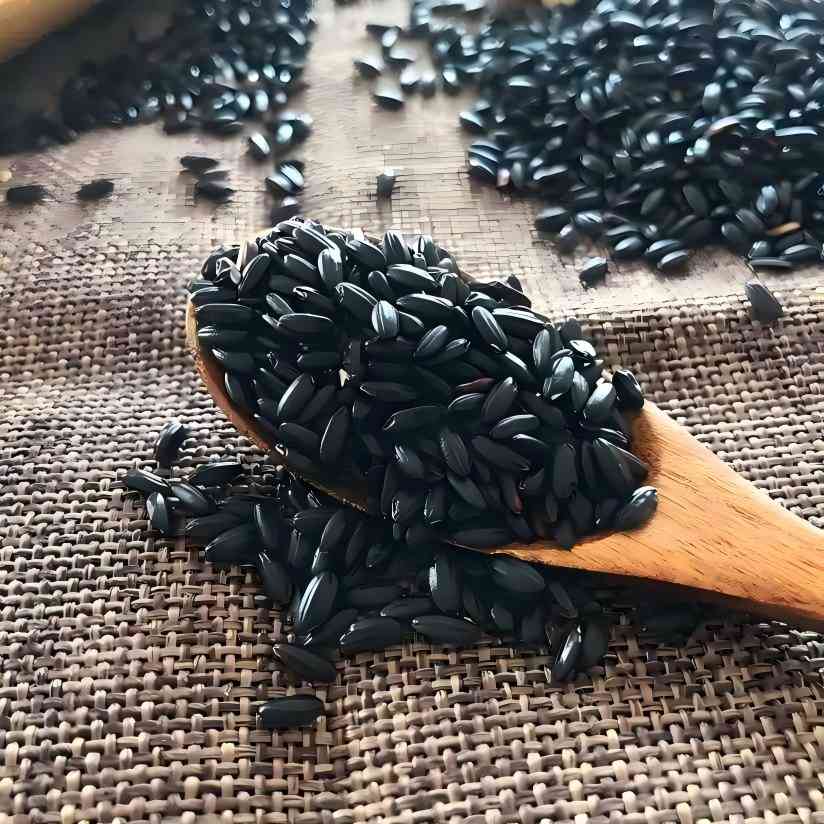
망고스틴 껍질 색소 2.6
망고스틴 (Mangosteen)은 상록나무과 (Clusiaceae)에 속하는 상록수이다.이것의 열매는 영양이 풍부하며 해열, 지방 분해, 피부 보습, 내열을 낮추는 효과가 있다.과일 껍질에는 색소 성분이 풍부해 천연 색소로 사용할 수 있다.장빈 등 (24)은 빛, 온도, 산화환원제, pH 및 식품첨가물이 망고스틴 껍질 색소의 안정성에 미치는 영향을 조사하였다.그 결과 가시광선 영역에서 색소의 최대 흡수파장은 478 nm 이었으며, 70% 에탄올이 추출에 가장 적합한 용매로 나타났다.이 안료는 산성, 중성 및 약간 알칼리성 조건에서 사용하기에 적합한 알코올 용성 안료입니다.그것은 강한 산화 저항성과 어느 정도의 내열성을 가지고 있습니다.금속 이온인 Ca 2+, Cu 2+, Mg 2+ 및 Na +와 벤조산 나트륨, 구연산, Vc 및 염화나트륨 시약과 같은 식품 첨가물은 망코스틴 껍질 색소의 안정성에 거의 영향을 미치지 않습니다.자외선, 실외 햇빛, Fe3+, 환원제, 중탄산나트륨과 포도당은이 색소에 특정한 색을 감소시키는 효과가 있다.
Peng Wenshu 등 25)이 망고스틴 열매 껍질에서 추출한 색소의 안정성과 항균활성을 다양한 조건에서 연구하였다.망고스틴 과피 색소는 pH 온도에 따라 금속 이온, 산화제, 환원제 및 일반 방부제의 농도를 달리하여 처리하였다.그 결과 망고스틴 과피 색소는 pH에서 더 안정적<6;색상 향상 효과는 온도가 80 °C를 초과 한 후 향상되었다;다양한 금속 이온은 그것에 거의 영향을 미치지 않았다;망고스틴 pericarp 색소는 쉽게 산화되고 환원되었다;그리고 고농도의 방부제가 안정성에 더 큰 영향을 미쳤다.세균성 실험 결과 망고스틴 껍질 추출물은 곰팡이, 세균 및 효모에 강한 세균성 효과가 있는 것으로 나타났다.저해효과는 색소질 농도가 증가함에 따라 증가하며, 세균성 효과는 다음과 같은 순서로 Streptococcus viridans >바실러스 옥토포디스>바실러스 subtilis >사카로마이세스 세르비지아>아스페르길루스니제르>시겔라 이질균>대장균이다.그 결과이 색소는 안정성과 항균 활성이 우수해 식품, 음료 첨가제 및 제약 산업에서 천연 식물 색소로 사용될 수 있는 것으로 나타났다.
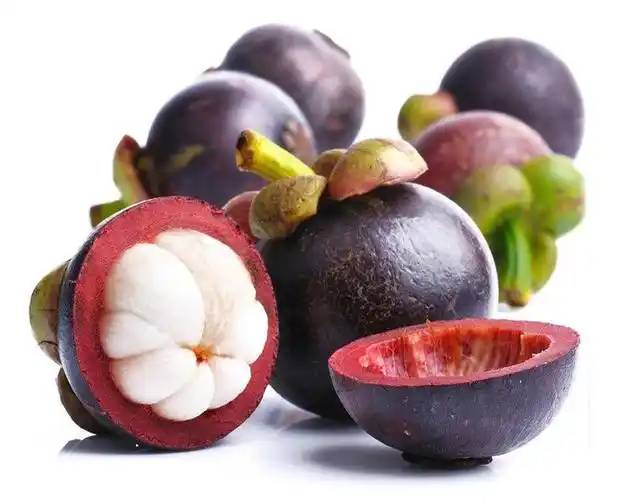
자색 고구마 색소 2.7
자색 고구마 색소(PSPC)는 자색고구마의 덩이줄기와 잎에서 추출한 천연색소이다.밝고 자연스러운 색을 띠며, 독성이 없고, 특별한 냄새가 없으며 다양한 영양, 약리, 건강 보존 기능 [26]을 가지고 있다.0.2% 염산 수용액을 추출 용매로 사용하고, 액체 대 고체 비율을 1:5, 추출 온도 50°C, 추출 시간 2h로 사용하여 더 높은 추출 수율을 얻을 수 있다는 것이 문헌에 보고되어 있다.crude 추출물을 PDA-100 macroporous 흡착수지를 이용하여 여과하고 흡착시킨 후 70% ethanol에서 해결한다.농축 및 건조된 용출물을 이용하여 Em530 nm= 100의 높은 색상값을 갖는 자색고구마 색소의 분말생성물을 얻을 수 있다 [27].
좐여종 [28]은 국내에서 생산된 자색고구마를 원료로 사용해 알코올, 유기산 용액 등의 용매로 색소를 추출하는 조건을 연구했다.추출용액의 농도, 물질-액비, 추출횟수, 추출시간 등의 인자의 영향을 조사하였다.단일인자 실험과 직교실험을 통하여 최적의 초음파 추출공정은 다음과 같이 결정되었다:자색고구마 시료를 4 h 동안 미리 담가두고, 농도 10%, 물질-액비 1:30, 초음파파워는 300 W, 추출시간 25분으로 구연산을 사용하고 3회 추출하였다.자색 고구마의 색소 추출 효과가 가장 좋습니다.
Xue Qiang 등 29)이 가장 좋은 공정 조건으로 추출액 pH 3, 추출시간 120분, 추출온도 60 °C, 재료비 1:20, 17.3 mg/100 g의 추출 수율을 보고하였다.자색고구마 색소는 온도, 빛, 금속이온에 비교적 안정하다.자색고구마 색소의 활성에 관하여 한영빈 등 (30, 31)은 자색고구마 안토시아닌의 항균기전을 분자적 관점에서 논의하였다.먼저 젤 차단 실험을 이용하여 대장균과 황색포도상구균 DNA의 이동속도를 연구하였다.둘째, ethidium bromide를 형광 탐침으로 사용하여 자색고구마 색소와 대장균 및 황색포도상구균 DNA 시스템 사이의 자외선 스펙트럼 및 형광 강도 변화를 연구하였다.위의 연구는 자색고구마 색소가 박테리아 DNA에 미치는 영향 및 작용 방식을 탐구함으로써 자색고구마 색소의 항균 메커니즘을 분자 수준에서 이해하고 자색고구마 색소의 구조와 기능의 상호 관계를 밝히는데 도움을 준다.
3 결론
식물유래 천연색소는 일반적으로 식물의 2차 대사산물로 함량이 낮고 안정성이 떨어진다.때문에 적합한 천연색소를 선택하고 안정성이 높은 천연색소의 신품종을 개발하며 천연색소의 새로운 원천을 탐색하는것은 연구자들이 시급히 해결해야 할 문제로 나서고있다.중국은 풍부한 식물 자원을 가지고 있다.이러한 귀중한 식물자원을 적극적으로 개발, 이용하고 천연색소의 추출방법 및 그와 관련된 활동에 대한 심도 있는 연구를 수행하는 것은 실무적으로 매우 중요하다.
참조
[1] Zheng Jianxian.기능성식품 (제2권) [M.북경:China Light Industry Press. 1999.
[2] 중국 식품 첨가물 생산 및 응용 산업 협회.식품첨가물 안내서 [M.북경:중국경공업출판사, 1999.
[3] 탕촨허, 펑지잉.천연 안토시아닌 색소의 생리적 기능 및 응용 전망 (The physiological function and application prospects of natural anthocyanin pigments)차가운 음료와 냉동식품산업, 2000(1):26-28.
[4] 주청전, 시아홍, 딩준펭.뽕나무 색소의 안정성에 관한 연구 (J.식품공학, 2010, 35(5)274-276
리신레이, 리지위안, 판쟁치 등 [5].뽕나무 색소 추출 조건의 최적화 [J.상해농업학회지, 2010, 26(3):60-63.
[6] 소헌승, 왕장강, 탕커밍 등.뽕나무 성숙기간 중 주요 색소의 동적변화 (J.설화과학, 2011, 37(4):600-605.
[7] 탕촨허, 펑지잉.천연 안토시아닌 색소의 생리적 기능 및 응용 가능성.차가운 음료와 냉동식품산업, 2000, (1):26-28.
[8] 리옌평, 마향평.포도 피부색소의 추출공정에 관한 연구 (硏究)남국과수, 2010, 39 (6):57-58.
[9] 왕천룡, 한향, 류소안.포도 피부색소의 추출조건에 관한 연구 (J.북방원예학, 2010, (1):75-77.
[10] 조우진메이, 공정리.포도 피부색소의 안정성에 관한 연구 (J.북방원예학, 2011 (19):27-28.
[11] 리옌메이, 리궈인, 자오푸순.알렉산드리아 포도의 무스카트로부터 피부색소 추출 및 항산화 활성 연구 (J.식품산업과학과, 2011, 32(7):164-166.
[12] 선 C D, 천 K S, 천 Y. 과실 생장 및 성숙기간 중 4 품종의 감귤 과실의 조직별 limonin과 nomilin의 함량과 항산화능.식품화학 2005, 93(4):599-60.5
[13] 왕홍태.귤껍질 색소의 추출방법에 관한 연구 (J.장수농학, 2011, 39(6):464-466.
[14] 겡징장.초음파를 이용한 귤껍질 색소의 추출 및 안정성에 관한 연구.식품공학, 2010, 35(10):252-256.
[15] 리링수, 취량량, 멍자오리.귤껍질 색소의 세균성 활성 (J.후베이 농업과학, 2010, 49(1):80-82.
[16] 왕홍태.귤껍질 색소의 세균성 및 안정성에 관한 연구 (J.식품과 기계, 2011, 27(6):163-165.
[17] 장야핑.밤나무 껍질 색소의 추출공정 [J.윈난화학공업, 2009, 36(3):31-32.
[18] 저우궈옌, 상잉잉, 공천보 외.밤 껍질 색소의 추출공정의 최적화 및 항균성.식품과학, 2010, 31(22):101-105.
[19] 우서핑, 수기화.흑미의 영양적 가치와 그 활용에 관한 고찰.외식산업, 2004, (5):5-6.
[20] 왕풍지, 선과량, 왕용지.흑미 안료의 안정성 및 응용에 관한 연구 (transactions:Research on stability and application of black rice pigments)농업기계, 011, (4):160-163.
[21] 우 S. P. 흑미 안료의 추출 및 안정성에 관한 연구.중국조미료, 2011, 36(12):
흑미의 발아중 색소와 아미노산 함량 변화에 관한 연구 (22) Fu W, Sun Y M.Anhui Agricultural Science, 2012, 40(3):1476-1478.
[23] 이신화, 이유원.흑미 색소의 항산화능에 관한 연구 (J.시리얼, 유류 및 식료품 가공, 2010, (6):106-108.
[24] 장빈, 허우샤오젠, 궈리샤.망고스틴 껍질 안료의 안정성에 관한 연구 (J.식품과 기계, 2011, 27(3):35-38.
[25] 펑원슈, 천위젠, 종원우 외.망고스틴 껍질 색소의 안정성 및 항균활성에 관한 연구 (J.식품연구개발, 2011, 32(12):55-60.
[26] 안강, 방붕, 천정이 외.고구마의 건강관리 기능에 대한 연구 진행 및 개발 전망.광저우 농업 과학 기술, 2004, (S1):6-9.
[27] 청린런, 궈루안, 주푸 외.자색고구마 색소의 추출 및 정제에 관한 연구 (J.Zhejiang Agricultural Sciences, 2011, (1):89-91.
[28] 루오 여제, 리지루이, 정리.자색고구마 색소의 추출공정에 관한 연구 (J.장수조미료와 비식품, 2010, 28(1):4-7.


 영어
영어 프랑스
프랑스 스페인
스페인 러시아
러시아 한국
한국 일본
일본